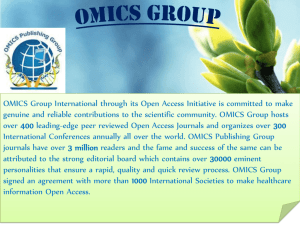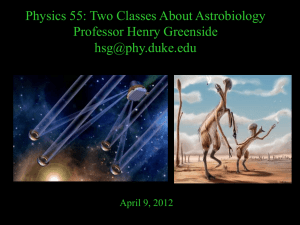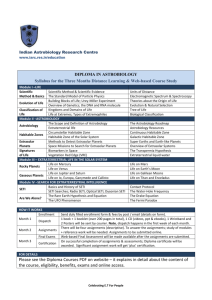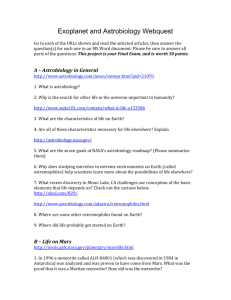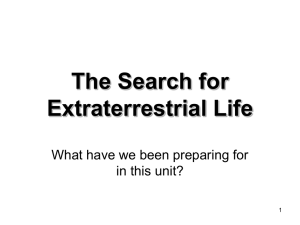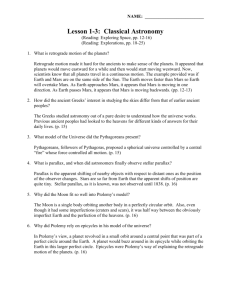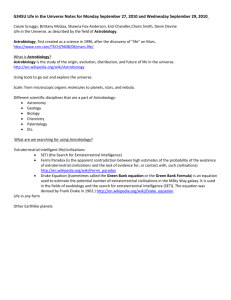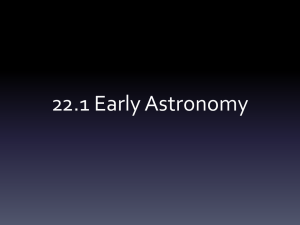Daniela_Billi - OMICS International
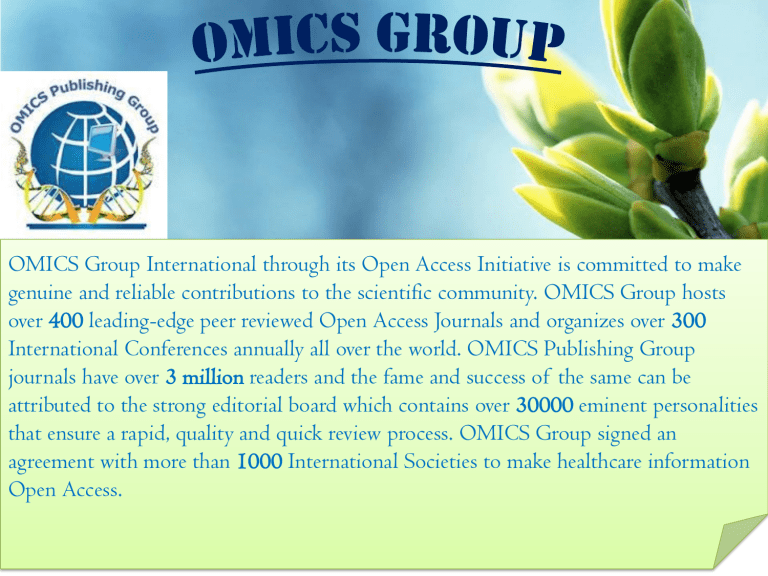
OMICS Group International through its Open Access Initiative is committed to make genuine and reliable contributions to the scientific community. OMICS Group hosts over 400 leading-edge peer reviewed Open Access Journals and organizes over 300
International Conferences annually all over the world. OMICS Publishing Group journals have over 3 million readers and the fame and success of the same can be attributed to the strong editorial board which contains over 30000 eminent personalities that ensure a rapid, quality and quick review process. OMICS Group signed an agreement with more than 1000 International Societies to make healthcare information
Open Access.
Contact us at: contact.omics@omicsonline.org
OMICS Journals are welcoming Submissions
OMICS Group welcomes submissions that are original and technically so as to serve both the developing world and developed countries in the best possible way.
OMICS Journals are poised in excellence by publishing high quality research. OMICS Group follows an Editorial
Manager® System peer review process and boasts of a strong and active editorial board.
Editors and reviewers are experts in their field and provide anonymous, unbiased and detailed reviews of all submissions.
The journal gives the options of multiple language translations for all the articles and all archived articles are available in
HTML, XML, PDF and audio formats. Also, all the published articles are archived in repositories and indexing services like
DOAJ, CAS, Google Scholar, Scientific Commons, Index
Copernicus, EBSCO, HINARI and GALE.
For more details please visit our website: http://omicsonline.org/Submitmanuscript.php
Journal of Astrobiology and Outreach
Assistant Professor
Department of Biology
University of Rome
Italy
Dr. Daniela Billi
Editorial Board member
Biography Dr. Erik Persson
Daniela Billi is Assistant Professor of Botany at the Department of Biology, University of Rome
“Tor Vergata”). She obtained her MSc in Biological Sciences in 1992 (University of Rome “La
Sapienza”), the PhD in Cellular and Molecular Biology in 1996 and the title of Specialist in
Biotechnological Application in 1999 (University of Rome “Tor Vergata”). She was a
Postdoctoral Research Associate at Virginia Tech Center for Genomics, Virginia Tech directed by
Prof. Malcolm Potts and at the Polar Desert Research Center, Florida State University, directed by Imre E. Friedmann. She has a deep expertise on the ecophysiology and genetic diversity of phototrophic communities of desert environments developed in more than 15 years of researches, which recently included the study of microbial communities in Antarctic lakes.
Researches focus on the cellular and molecular basis of cyanobacterial survival in extreme environments, like the Dry Valleys in Antarctica and the Atacama Desert in Chile, which are considered two terrestrial analogous of Mars. Astrobiological experiments are carried out by exposing desert cyanobacteria to space and Martian simulations in preparation of the next
EXPOSE-R2 mission on the International Space Station. The aims are to investigate the endurance of life as we know it, to identify biosignatures to search for life on Mars, to validate the lithopanspermia theory and develop life-support systems. She maintains ~200
Chroococcidiopsis isolates from hot and cold deserts (as part of the Culture Collection of
Microorganisms from Extreme Environments (CCMEE) established by E. Imre Friedmann,
Florida State University, NASA). She is currently the coordinator of a MAE Bilateral Relevant
Project (Italy-USA, NASA), is team member of two ESA-ILSRA 2009 projects (BOSS and
BIOMEX), PI of two projects fund by the Italian Space agency ASI (BOSS_Cyano e
BIOMEX_Cyano) and PI of the CNR-PNRA/PEA A1.01 and unit PI within a CNR-PNRA 2013 project for research in Antactic.
Research Interests
• Her researches focus on the ecophysiology and genetic diversity of phototrophic communities from desert environments and more recently on microbial communities from Antarctic lakes.
• Studies are dealing with the cellular and molecular basis of the cyanobacterial tolerance against environmentsl stressors, like desiccation, ionizing and UV radiations.
• A key part of her researches focuses on astrobiological experiments carried out by exposing desert cyanobacteria to space and Martian simulations in preparation of the next
EXPOSE-R2 mission on the International Space Station.
• The aims are to investigate the endurance of life as we know it, to identify biosignatures to search for life on Mars, to validate the lithopanspermia theory and to develop life-support systems for the human space exploration.
Recent Publications
Ionizing-radiation resistance in the desiccation-tolerant cyanobacteriumChroococcidiopsis
D Billi, EI Friedmann, KG Hofer, MG Caiola… - Applied and …, 2000 - Am Soc Microbiol
Engineering desiccation tolerance inEscherichia coli
D Billi, DJ Wright, RF Helm, T Prickett… - Applied and …, 2000 - Am Soc Microbiol
A novel staining protocol for multiparameter assessment of cell heterogeneity in
Phormidium populations (cyanobacteria) employing fluorescent dyes
D Tashyreva, J Elster, D Billi - PloS one, 2013 - dx.plos.org
What is Astrobiology?
“ Astrobiology is the study of life in the universe.
It investigates the origin, evolution, distribution, & future of life on Earth, & the search for life beyond Earth. ”
Astrobiology addresses three fundamental questions:
1) How does life begin & evolve?
2) Is there life beyond Earth & how
3) What is the future of life on
Earth can we detect it?
Astrobiology addresses the question of whether life exists beyond Earth, and how humans can detect it if it does!!
”
Life Elsewhere
•
Studies of life in extreme environments on Earth have led us to focus on some prime places to look for life
•
Mars
•
Europa (moon of Jupiter)
•
Titan (moon of Saturn)
Life in the Universe
Hubble Space Telescope image of Sednatakes 10,500 years to circle the Sun!
Our Solar System has planets, dwarf planets, moons, asteroids, comets, and interplanetary dust.
Interplanetary Dust
Particle 10 µm across made by dying and exploded stars
Milky Way galaxy has 100 billion (100,000,000,000) stars.
Universe has 100 billion (or more) galaxies.
Many stars have planets.
Some like Jupiter and Saturn.
Some may be like Earth.
Potential for a large number of Earth-like planets (ELPs).
Astrobiology, Incremental Data Accumulation,
New Ideas & Understanding, Paradigm Shifts
NOTICE THE TIME FRAMES….
Search for Extrasolar Planets ~ 15 years
Deep Time: Reinterpreting Early Earth < 5-10 years
Late 70’s Vents Life on the Edge (extreme environments)
The Rock that Started it allScientific Process Mid 90’s
Asteroids and Dinosaur Extinction ~ ’79
Human Microbiomes ~ 5-10 years
Astrobiology makes use of physics, chemistry, astronomy, biology, molecular biology, ecology, planetary science, geography, and geology to investigate the possibility of life on other worlds and help recognize biospheres that might be different from the biosphere on Earth.
Astrobiology concerns itself with interpretation of existing scientific data; given more detailed and reliable data from other parts of the universe, the roots of astrobiology itself—physics, chemistry and biology—may have their theoretical bases challenged.
Although speculation is entertained to give context, astrobiology concerns itself primarily with hypotheses that fit firmly into existing scientific theories.
It has been proposed that viruses are likely to be encountered on other life-bearing planets.Efforts to discover current or past life on
Mars is an active area of research.
Astrobiology Unites Disciplines to Study Life in the Universe
Origins,
Evolution,
Distribution and Future of Life
While it is an emerging and developing field, the question of whether life exists elsewhere in the universe is a verifiable hypothesis and thus a valid line of scientific inquiry. Though once considered outside the mainstream of scientific inquiry, astrobiology has become a formalized field of study.
Earth is the only place in the universe known to harbor life.However, recent advances in planetary science have changed fundamental assumptions about the possibility of life in the universe, raising the estimates of habitable zones around other stars, along with the discovery of hundreds of extrasolar planets and new insights into the extreme habitats here on Earth, suggesting that there may be many more habitable places in the universe than considered possible until very recently.
On 4 November 2013, astronomers reported, based on Keplerspace mission data, that there could be as many as 40 billion Earthsized planets orbiting in the habitable zones of sun-like stars and red dwarf stars within the Milky Way Galaxy.11 billion of these estimated planets may be orbiting sun-like stars.
The Origin of Life on Earth
4 billion years ago
The nearest such planet may be 12 light-years away, according to the scientists.
A particular focus of current astrobiology research is the search for life on
Mars due to its proximity to Earth and geological history. There is a growing body of evidence to suggest that Mars has previously had a considerable amount of water on its surface, water being considered an essential precursor to the development of carbon-based life
Our Solar System
Jupiter Saturn
Uranus Pluto
Neptun e
Neptune
Mercury Venus Earth Mars
The Terrestrial Planets
Mercury
Very hot because its atmosphere
Mars
Very near the Sun
Venus
No atmosphere, cold but…
Mars
The life of the stars
Red Giant
Panetary nebula and white dwarf
Yellow dwarf
10 billion years
The life of the stars
Blue giants 100 million years
Supernova remmanent and neutron star
Supernova
Multiple Different Search Types
SETI Searches
Extrasolar/Habitable Planets
Exobiology in the Solar System
Multiple Different Search Types
SETI Searches
Radio-telescopes - within Galaxy
Discovery: Intelligent Life
Unknown Biology or Chemistry
Light Years Away (still exist?)
Aliens ???
Extrasolar/Habitable Planets
Telescopes - within Galaxy
Discovery: Other Solar Systems; Terrestrial Planets?
Information on Atmospheres (Compostion/Conditions?)
Maybe Habitable?
Life ???
Multiple Different Search Types
SETI Searches
Extrasolar/Habitable Planets
Exobiology in the Solar System **
Missions -- visits
Meteorites -Fossil Evidence?
Cosmochemistry (Process; Replication)
Origin of Life Research (Lab Experiments)
**
Real Time; Potential for Cross Contamination; Biohazards
1976
Strategy Has Worked on Mars…
1996
Built Understanding about Mars and its
Environment over time...
2003
2007
2011
More and more indications of water found …
Small and large scales …
According to Erik Persson,,
If we eventually discover extraterrestrial life, do we have any moral obligations for how to treat the life-forms we find; does it matter whether they are intelligent, sentient, or just microbial—and does it matter that they are extraterrestrial?
What does it take to be a moral object? and What has value of what
kind? I will start with the first of these questions by looking at the most important attempts to answer this question on our own planet and by asking whether and how they could be applied to extraterrestrial life.
The results range from a very strong protection of all extraterrestrial life and all extraterrestrial environments, whether inhabited or not, to total exclusion of extraterrestrial life.
Subsequently, I also examine whether extraterrestrial life that lacks moral status can have value to human or alien life with moral status, and if that could generate any obligations for how to treat extraterrestrial life.
Based on this analysis, I conclude that extraterrestrial life-forms can have both instrumental value and end value to moral objects, which has strong implications for how to treat them
Approved By
E-signature:
Daneilla Billi
This ppt ahs been approved by Dr. Daneilla Billi
OMICS Group Open Access Membership
OMICS publishing Group Open Access Membership enables academic and research institutions, funders and corporations to actively encourage open access in scholarly communication and the dissemination of research published by their authors.
For more details and benefits, click on the link below: http://omicsonline.org/membership.php

